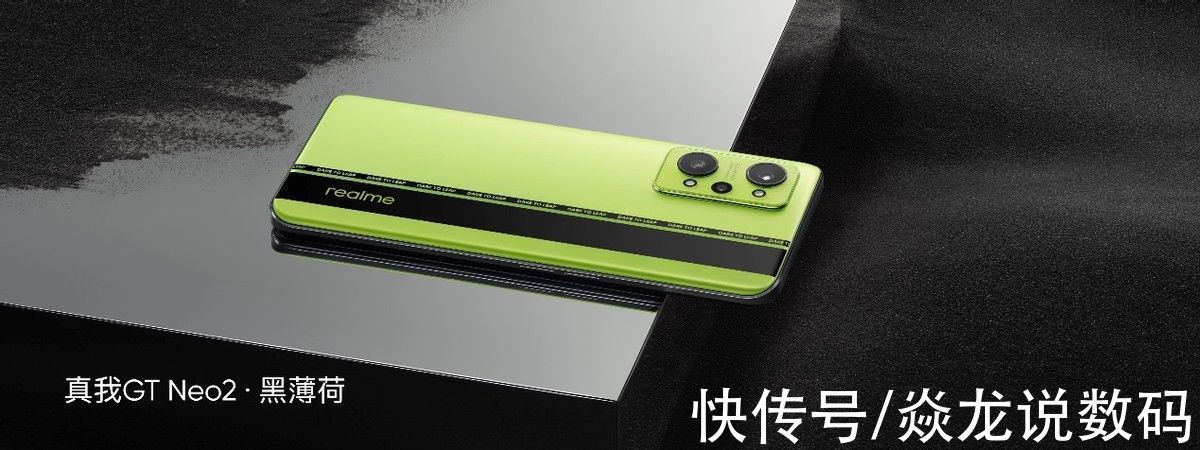EventBus 3.0жәҗз ҒеҲҶжһҗ
з®Җд»Ӣ
EvenntBus жҳҜдёҖдёӘејҖжәҗеә“пјҢе®ғеҲ©з”ЁеҸ‘еёғ/и®ўйҳ…иҖ…иҖ…жЁЎејҸжқҘеҜ№йЎ№зӣ®иҝӣиЎҢи§ЈиҖҰгҖӮе®ғеҸҜд»ҘеҲ©з”ЁеҫҲе°‘зҡ„д»Јз ҒпјҢжқҘе®һзҺ°еӨҡ组件й—ҙйҖҡдҝЎгҖӮandroidзҡ„组件й—ҙйҖҡдҝЎпјҢжҲ‘们дёҚз”ұеҫ—дјҡжғіеҲ°handlerж¶ҲжҒҜжңәеҲ¶е’Ңе№ҝж’ӯжңәеҲ¶пјҢйҖҡиҝҮе®ғ们д№ҹеҸҜд»ҘиҝӣиЎҢйҖҡдҝЎпјҢдҪҶжҳҜдҪҝз”Ёе®ғ们иҝӣиЎҢйҖҡдҝЎпјҢд»Јз ҒйҮҸеӨҡпјҢ组件й—ҙе®№жҳ“дә§з”ҹиҖҰеҗҲеј•з”ЁгҖӮе…ідәҺEventBusзҡ„е·ҘдҪңжЁЎејҸпјҢиҝҷйҮҢеј•з”ЁдёҖеј е®ҳж–№еӣҫеё®еҠ©зҗҶи§ЈгҖӮ
ж–Үз« еӣҫзүҮ
гҖҗEventBus 3.0 жәҗз ҒеҲҶжһҗгҖ‘дёәд»Җд№ҲдјҡйҖүжӢ©дҪҝз”ЁEventBusжқҘеҒҡйҖҡдҝЎпјҹ
- з®ҖеҢ–дәҶ组件й—ҙдәӨжөҒзҡ„ж–№ејҸ
- еҜ№дәӢ件йҖҡдҝЎеҸҢж–№иҝӣиЎҢи§ЈиҖҰ
- еҸҜд»ҘзҒөжҙ»ж–№дҫҝзҡ„жҢҮе®ҡе·ҘдҪңзәҝзЁӢпјҢйҖҡиҝҮThreadMode
- йҖҹеәҰеҝ«пјҢжҖ§иғҪеҘҪ
- еә“жҜ”иҫғе°ҸпјҢ60kе·ҰеҸіпјҢеҜ№еҢ…еӨ§е°Ҹж— еҪұе“Қ
- дҪҝз”ЁиҝҷдёӘеә“зҡ„appеӨҡпјҢжңүжқғеЁҒжҖ§
- еҠҹиғҪеӨҡпјҢдҪҝз”Ёж–№дҫҝ
дёүдёӘйҮҚиҰҒзҡ„и§’иүІ
1:Publisher дәӢ件еҸ‘еёғиҖ…
2:Subscriber дәӢ件订йҳ…иҖ…
3:Event дәӢ件
Publisher post дәӢ件еҗҺпјҢSubscriberдјҡиҮӘеҠЁж”¶еҲ°дәӢ件(и®ўйҳ…ж–№жі•дјҡиў«дё»еҠЁи°ғз”ЁпјҢ并е°ҶдәӢд»¶дј йҖ’иҝҮжқҘ)гҖӮ
дҪҝз”Ё
//еҖ’е…Ҙgradle дҫқиө–
implementation 'org.greenrobot:eventbus:3.3.1'
1:е®ҡд№үдәӢ件зұ»еһӢ
public static class MessageEvent { /* Additional fields if needed */ }2:еңЁйңҖиҰҒи®ўйҳ…дәӢ件зҡ„жЁЎеқ—дёӯжіЁеҶҢEventBusпјҢйЎөйқўй”ҖжҜҒж—¶жіЁж„ҸжіЁй”Җ
@Override
protected void onStart() {
super.onStart();
EventBus.getDefault().register(this);
}@Override
protected void onDestroy() {
super.onDestroy();
EventBus.getDefault().unregister(this);
}
3:жіЁеҶҢйңҖиҰҒжҺҘеҸ—зҡ„дәӢ件зұ»еһӢ //жіЁж„ҸеҗҢдёҖз§ҚдәӢ件зұ»еһӢдёҚиғҪйҮҚеӨҚжіЁеҶҢгҖӮдёҚ然дјҡеҙ©жәғпјҢдё”и®ўйҳ…ж–№жі•еҝ…йЎ»жҳҜpublicзұ»еһӢзҡ„гҖӮ
@Subscribe(threadMode = ThreadMode.MAIN)
public void onMessageEvent(MessageEvent event) {
// Do something
}4.еҸ‘йҖҒдәӢ件
EventBus.getDefault().post(new MessageEvent());
иҝҷжҳҜжӯҘйӘӨ3з§Қзҡ„ж–№жі•е°ұдјҡ收еҲ°MessageEventдәӢ件зҡ„еӣһи°ғжәҗз ҒеҲҶжһҗ EventBus дё»зұ»дёӯеҸӘжңүдёҚеҲ°600иЎҢд»Јз ҒпјҢйқһеёёзІҫз®ҖгҖӮEventBusдҪҝз”ЁдәҶеҜ№еӨ–жҸҗдҫӣдәҶеҚ•дҫӢжЁЎеһӢпјҢеҶ…йғЁжһ„е»әдҪҝз”ЁдәҶBuildжЁЎејҸгҖӮ
1 register
public void register(Object subscriber) {
if (AndroidDependenciesDetector.isAndroidSDKAvailable() &&!AndroidDependenciesDetector.areAndroidComponentsAvailable()) {
// Crash if the user (developer) has not imported the Android compatibility library.
throw new RuntimeException("It looks like you are using EventBus on Android, " +
"make sure to add the \"eventbus\" Android library to your dependencies.");
}//1д»ҺиҝҷйҮҢејҖе§ӢзңӢпјҢиҺ·еҸ–и°ғз”ЁиҖ…зҡ„зұ»еҜ№иұЎгҖӮ
Class subscriberClass = subscriber.getClass();
//2 жүҫеҲ°и®ўйҳ…зұ»дёӯзҡ„и®ўйҳ…ж–№жі•
List subscriberMethods = subscriberMethodFinder.findSubscriberMethods(subscriberClass);
//3йҒҚеҺҶи®ўйҳ…ж–№жі•пјҢе°Ҷи®ўйҳ…иҖ…е’Ңе…¶дёӯзҡ„и®ўйҳ…ж–№жі•з»‘е®ҡгҖӮ
synchronized (this) {
for (SubscriberMethod subscriberMethod : subscriberMethods) {
subscribe(subscriber, subscriberMethod);
}
}
}Step1 зңӢдёӢжӯҘйӘӨ2дёӯзҡ„subscriberMethodFinderзҡ„findSubscriberMethodsж–№жі•
List findSubscriberMethods(Class subscriberClass) {
//1йҰ–е…Ҳд»Һзј“еӯҳmapдёӯжӢҝеҲ°и®ўйҳ…зұ»зҡ„и®ўйҳ…ж–№жі•еҲ—иЎЁпјҢдҪҝз”ЁдәҶзј“еӯҳжҸҗй«ҳжҖ§иғҪпјҢniceпјҢдёҚеҮәжүҖж–ҷMETHOD_CACHEзҡ„зұ»еһӢжҳҜMap, List >
List subscriberMethods = METHOD_CACHE.get(subscriberClass);
//2 еҰӮжһңдёҚдёәз©әпјҢиҜҙжҳҺд№ӢеүҚиҜҘзұ»жӣҫз»ҸжіЁеҶҢиҝҮпјҢиҜҘзұ»зҡ„ж–°еҜ№иұЎдёҚеҝ…йҮҚж–°еҒҡз»‘е®ҡдәҶпјҢеӣ дёәжӯӨж—¶зҡ„ж“ҚдҪңжҳҜзұ»еұӮйқўзҡ„
if (subscriberMethods != null) {
return subscriberMethods;
}
//еҰӮжһңsubscriberMethods дёәnull,иҜҙжҳҺиҜҘзұ»жҳҜ第дёҖж¬ЎжіЁеҶҢпјҢйңҖиҰҒе°Ҷе…¶дёӯзҡ„жҺҘ收方法дҝқеӯҳиө·жқҘпјҢ
//ignoreGeneratedIndex й»ҳи®Өдёәfalse
if (ignoreGeneratedIndex) {
subscriberMethods = findUsingReflection(subscriberClass);
} else {
subscriberMethods = findUsingInfo(subscriberClass);
}
//еҰӮжһңsubscriberMethodsдёәnullпјҢиҜҙжҳҺеҪ“еүҚзұ»еҜ№иұЎжІЎжңүз”ҹе‘Ҫи®ўйҳ…ж–№жі•пјҢжҠӣеҮәејӮеёё
if (subscriberMethods.isEmpty()) {
throw new EventBusException("Subscriber " + subscriberClass
+ " and its super classes have no public methods with the @Subscribe annotation");
} else {
//е°ҶеҪ“еүҚжіЁеҶҢзұ»е’Ңе…¶дёӯзҡ„жіЁеҶҢж–№жі•дҝқеӯҳиө·жқҘ
METHOD_CACHE.put(subscriberClass, subscriberMethods);
return subscriberMethods;
}
} Step2 д»ҺжӯҘйӘӨ2дёӯжүҫеҮәзұ»зҡ„жіЁеҶҢж–№жі•еҲ—иЎЁпјҢ然еҗҺйҒҚеҺҶеҲ—иЎЁпјҢи°ғз”ЁдёӢйқўзҡ„ж–№жі•пјҢе°Ҷзұ»еҜ№иұЎе’ҢжіЁеҶҢж–№жі•з»‘е®ҡгҖӮ
private void subscribe(Object subscriber, SubscriberMethod subscriberMethod) {
//1 жүҫеҲ°и®ўйҳ…ж–№жі•зҡ„дәӢ件зұ»еһӢпјҢеҚіеҸ‘йҖҒдәӢ件зҡ„MessageEvent.class
Class eventType = subscriberMethod.eventType;
//2 е°Ҷи®ўйҳ…иҖ…зұ»еҜ№иұЎе’Ңи®ўйҳ…дәӢ件绑е®ҡжҲҗдёҖдёӘеҜ№иұЎ
Subscription newSubscription = new Subscription(subscriber, subscriberMethod);
//subscriptionsByEventType иҝҷдёӘйӣҶеҗҲиӮҜе®ҡжҳҜз”ЁжқҘж”ҫзҪ®еҗҢдёҖдәӢ件зұ»еһӢзҡ„и®ўйҳ…йӣҶеҗҲзҡ„пјҢеӣ дёәдёҖдёӘдәӢ件еҸҜиғҪдјҡжңүеӨҡдёӘи®ўйҳ…зҡ„гҖӮ
CopyOnWriteArrayList subscriptions = subscriptionsByEventType.get(eventType);
if (subscriptions == null) {
subscriptions = new CopyOnWriteArrayList<>();
subscriptionsByEventType.put(eventType, subscriptions);
} else {
//еҰӮжһңдёҖдёӘи®ўйҳ…иҖ…еӨҡж¬Ўи®ўйҳ…дәҶдёҖдёӘдәӢ件пјҲ@SubscribeжіЁи§Јзҡ„ж–№жі•зҡ„еҸӮж•°жҳҜеҗҢдёҖзұ»еһӢпјүпјҢжҠӣеҮәејӮеёё
if (subscriptions.contains(newSubscription)) {
throw new EventBusException("Subscriber " + subscriber.getClass() + " already registered to event "
+ eventType);
}
}//3 жҢүз…§и®ўйҳ…ж–№жі•дёӯ@Subscribeдёӯзҡ„priorityеҸӮж•°иҝӣиЎҢжҺ’еәҸпјҢй»ҳи®ӨдёәжңҖдҪҺдјҳе…Ҳзә§0гҖӮsubscriptionsз§Қзҡ„еҜ№иұЎжҢүдјҳе…Ҳзә§жҺ’еәҸпјҢ收еҲ°дәӢ件еҗҺе°ұдјҡжҢүдјҳе…Ҳзә§иҝӣиЎҢеӣһи°ғ
int size = subscriptions.size();
for (int i = 0;
i <= size;
i++) {
if (i == size || subscriberMethod.priority > subscriptions.get(i).subscriberMethod.priority) {
subscriptions.add(i, newSubscription);
break;
}
}// typesBySubscriberзұ»еһӢMap>>,Key дёәи®ўйҳ…иҖ…пјҢvalueдёәи®ўйҳ…иҖ…дёӯзҡ„и®ўйҳ…ж–№жі•пјҢз”ЁжқҘи®°еҪ•жҜҸдёӘи®ўйҳ…иҖ…еҶ…йғЁйғҪи®ўйҳ…дәҶе“ӘдәӣдәӢ件зұ»еһӢ
List> subscribedEvents = typesBySubscriber.get(subscriber);
if (subscribedEvents == null) {
subscribedEvents = new ArrayList<>();
typesBySubscriber.put(subscriber, subscribedEvents);
}
subscribedEvents.add(eventType);
//зІҳжҖ§дәӢ件зӣёе…і
if (subscriberMethod.sticky) {
if (eventInheritance) {
// Existing sticky events of all subclasses of eventType have to be considered.
// Note: Iterating over all events may be inefficient with lots of sticky events,
// thus data structure should be changed to allow a more efficient lookup
// (e.g. an additional map storing sub classes of super classes: Class -> List).
Set, Object>> entries = stickyEvents.entrySet();
for (Map.Entry, Object> entry : entries) {
Class candidateEventType = entry.getKey();
if (eventType.isAssignableFrom(candidateEventType)) {
Object stickyEvent = entry.getValue();
checkPostStickyEventToSubscription(newSubscription, stickyEvent);
}
}
} else {
Object stickyEvent = stickyEvents.get(eventType);
checkPostStickyEventToSubscription(newSubscription, stickyEvent);
}
}
} 2 post
/** Posts the given event to the event bus. */
public void post(Object event) {
//1йҰ–е…ҲиҺ·еҸ–еҪ“еүҚзәҝзЁӢзҡ„е·ҘдҪңзҠ¶жҖҒ
PostingThreadState postingState = currentPostingThreadState.get();
//2иҺ·еҸ–еҪ“еүҚзәҝзЁӢзҡ„д»»еҠЎйҳҹеҲ—
ListpostSingleEventForEventType
private boolean postSingleEventForEventType(Object event, PostingThreadState postingState, Class eventClass) {
CopyOnWriteArrayList subscriptions;
synchronized (this) {
//1иҺ·еҸ–иҜҘдәӢ件зҡ„жүҖжңүи®ўйҳ…е…ізі»еҲ—иЎЁ
subscriptions = subscriptionsByEventType.get(eventClass);
}
//2 йҒҚеҺҶи®ўйҳ…е…ізі»еҲ—иЎЁпјҢдҫқж¬Ўе°ҶдәӢ件еҸ‘йҖҒеҲ°и®ўйҳ…иҖ…
if (subscriptions != null && !subscriptions.isEmpty()) {
for (Subscription subscription : subscriptions) {
postingState.event = event;
postingState.subscription = subscription;
boolean aborted;
try {
//е°ҶдәӢ件еҸ‘йҖҒеҲ°и®ўйҳ…иҖ…
postToSubscription(subscription, event, postingState.isMainThread);
aborted = postingState.canceled;
} finally {
postingState.event = null;
postingState.subscription = null;
postingState.canceled = false;
}
if (aborted) {
break;
}
}
return true;
}
return false;
}postToSubscription иҝҷйҮҢе°ұжҜ”иҫғе…ій”®дәҶпјҢжңҖз»ҲеҲ°дәҶдәӢ件еҲҶеҸ‘зҡ„ең°ж–№дәҶгҖӮ
private void postToSubscription(Subscription subscription, Object event, boolean isMainThread) {
//1 йҰ–е…ҲеҲӨж–ӯи®ўйҳ…е…ізі»дёӯи®ўйҳ…ж–№жі•зҡ„зәҝзЁӢпјҢе°ұжҳҜеЈ°жҳҺзәҝзЁӢж—¶дҪҝз”Ё@SubcribeжіЁи§Јж—¶дј е…Ҙзҡ„threadModeеӯ—ж®өзҡ„еҖј
switch (subscription.subscriberMethod.threadMode) {
case POSTING: //зӣҙжҺҘеҸ‘йҖҒдәӢ件
invokeSubscriber(subscription, event);
break;
case MAIN://еңЁдё»зәҝзЁӢзӣёеә”дәӢ件
//дәӢ件еҸ‘еҮәзәҝзЁӢжҳҜеҗҰжҳҜдё»зәҝзЁӢ
if (isMainThread) { жҳҜпјҢзӣҙжҺҘеҸ‘йҖҒ
invokeSubscriber(subscription, event);
} else {дёҚжҳҜйҖҡиҝҮmainThreadPosterеҸ‘йҖҒ
mainThreadPoster.enqueue(subscription, event);
}
break;
case MAIN_ORDERED:
if (mainThreadPoster != null) {
mainThreadPoster.enqueue(subscription, event);
} else {
// temporary: technically not correct as poster not decoupled from subscriber
invokeSubscriber(subscription, event);
}
break;
case BACKGROUND: //еңЁеҗҺеҸ°зәҝзЁӢзӣёеә”дәӢ件
//дәӢ件еҸ‘еҮәзәҝзЁӢжҳҜеҗҰжҳҜдё»зәҝзЁӢ
if (isMainThread) {дё»зәҝзЁӢеҸ‘йҖҒдәӢ件пјҢbackgroundPosterиҪ¬еҸ‘
backgroundPoster.enqueue(subscription, event);
} else { йқһдё»зәҝзЁӢеҸ‘йҖҒдәӢ件пјҢзӣҙжҺҘеҸ‘йҖҒ
invokeSubscriber(subscription, event);
}
break;
case ASYNC: //ејӮжӯҘзәҝзЁӢзӣёеә”дәӢ件
//йҖҡиҝҮasyncPosterеҸ‘йҖҒдәӢ件
asyncPoster.enqueue(subscription, event);
break;
default:
throw new IllegalStateException("Unknown thread mode: " + subscription.subscriberMethod.threadMode);
}
}invokeSubscriber
void invokeSubscriber(Subscription subscription, Object event) {
try {
//йқһеёёжҡҙеҠӣпјҢзӣҙжҺҘйҖҡиҝҮеӣһи°ғи°ғз”Ёи®ўйҳ…иҖ…дёӯзҡ„и®ўйҳ…ж–№жі•
subscription.subscriberMethod.method.invoke(subscription.subscriber, event);
} catch (InvocationTargetException e) {
handleSubscriberException(subscription, event, e.getCause());
} catch (IllegalAccessException e) {
throw new IllegalStateException("Unexpected exception", e);
}
}еңЁpostToSubscriptionдёӯжңүдёүдёӘйҮҚиҰҒзҡ„и§’иүІmainThreadPosterпјҢbackgroundPosterпјҢasyncPoster
е…¶дёӯmainThreadPosterзҡ„зұ»еһӢжҳҜHandlerPosterгҖӮе…¶е®һе°ұжҳҜHandlerгҖӮи°ғз”Ёе…¶enqueu()ж–№жі•
иҖҢbackgroundPosterе’ҢasyncPoster жң¬иҙЁйғҪжҳҜRunnable
3 unregister
и§Јз»‘ж–№жі•е°ұз®ҖеҚ•еӨҡдәҶпјҢйҮҚиҰҒзҡ„жҳҜе°ұжҠҠregisterйҮҢжҸҗеҲ°зҡ„2дёӘйҮҚиҰҒзҡ„еҮ дҪ•дёӯеҲ йҷӨи®ўйҳ…иҖ…
/** Unregisters the given subscriber from all event classes. */
public synchronized void unregister(Object subscriber) {
//1 д»ҺtypesBySubscriberжүҫеҲ°и®ўйҳ…иҖ…жүҖи®ўйҳ…зҡ„дәӢ件зұ»еһӢеҲ—иЎЁ
List> subscribedTypes = typesBySubscriber.get(subscriber);
if (subscribedTypes != null) {
//2 йҒҚеҺҶеҲ—иЎЁпјҢдҫқж¬Ўи§Јз»‘и®ўйҳ…иҖ…е’ҢдәӢ件зұ»еһӢгҖӮеә”иҜҘжҳҜд»ҺpostеҲҶжһҗйҮҢзҡ„и®ўйҳ…дәӢ件йӣҶеҗҲsubscriptionsByEventTypeйҮҢ移йҷӨеҜ№еә”дәӢ件зұ»еһӢзҡ„иҜҘи®ўйҳ…иҖ…
for (Class eventType : subscribedTypes) {
unsubscribeByEventType(subscriber, eventType);
}
//3移йҷӨи®ўйҳ…иҖ…
typesBySubscriber.remove(subscriber);
} else {
logger.log(Level.WARNING, "Subscriber to unregister was not registered before: " + subscriber.getClass());
}
}/**
* и§Јз»‘и®ўйҳ…иҖ…е’ҢдәӢ件зұ»еһӢ
* @param subscriber и®ўйҳ…иҖ…
* @param eventTypeи®ўйҳ…зҡ„дәӢ件зұ»еһӢ
*/
private void unsubscribeByEventType(Object subscriber, Class eventType) {
//д»ҺsubscriptionsByEventTypeйҮҢиҺ·еҸ–иҜҘи®ўйҳ…дәӢ件зҡ„и®ўйҳ…иҖ…йӣҶеҗҲгҖӮ
List subscriptions = subscriptionsByEventType.get(eventType);
if (subscriptions != null) {
int size = subscriptions.size();
for (int i = 0;
i < size;
i++) {
//йҒҚеҺҶйӣҶеҗҲпјҢиҺ·еҸ–жүҖжңүзҡ„и®ўйҳ…е…ізі»
Subscription subscription = subscriptions.get(i);
if (subscription.subscriber == subscriber) {
subscription.active = false;
subscriptions.remove(i);
//йҮҚиҰҒгҖӮдёҚ然дјҡжҠӣеҮәConcurrentModifyException
i--;
size--;
}
}
}
}
4 SubscribeжіЁи§Ј
@Documented
@Retention(RetentionPolicy.RUNTIME)
@Target({ElementType.METHOD})
public @interface Subscribe {
ThreadMode threadMode() default ThreadMode.POSTING;
/**
* If true, delivers the most recent sticky event (posted with
* {@link EventBus#postSticky(Object)}) to this subscriber (if event available).
*/
boolean sticky() default false;
/** Subscriber priority to influence the order of event delivery.
* Within the same delivery thread ({@link ThreadMode}), higher priority subscribers will receive events before
* others with a lower priority. The default priority is 0. Note: the priority does *NOT* affect the order of
* delivery among subscribers with different {@link ThreadMode}s! */
int priority() default 0;
}5 ThreadMode
//е®ҡд№үдәӢ件еӣһи°ғж–№жі•е·ҘдҪңзәҝзЁӢзҡ„зұ»
public enum ThreadMode {
/**
*зӣҙжҺҘеңЁеҸ‘йҖҒдәӢ件зҡ„зәҝзЁӢйҮҢи°ғз”ЁSubscriberпјҢиҝҷдёӘжҳҜй»ҳи®Өзҡ„и®ҫзҪ®пјҢдәӢ件дәӨд»ҳејҖй”ҖжңҖе°ҸпјҢеӣ дёәе®ғйҒҝе…ҚдәҶзәҝзЁӢеҲҮжҚўгҖӮеӣ жӯӨе®ғжҳҜйӮЈз§ҚеҫҲеҝ«е®ҢжҲҗзҡ„еҚ•д»»еҠЎ*й»ҳи®Өзҡ„зҡ„зәҝзЁӢе·ҘдҪңжЁЎеһӢгҖӮдҪҝз”ЁиҜҘжЁЎеһӢзҡ„дәӢ件еҝ…йЎ»еҫҲеҝ«е®ҢжҲҗпјҢеӣ дёәеҪ“еҸ‘еёғзәҝзЁӢжҳҜдё»зәҝзЁӢж—¶пјҢе®ғеҸҜиғҪйҳ»еЎһдё»зәҝзЁӢгҖӮ
/
POSTING,/**
* еңЁAndroidе№іеҸ°пјҢи®ўйҳ…иҖ…е°ҶдјҡеңЁAndroidзҡ„дё»зәҝзЁӢи°ғз”ЁгҖӮеҰӮжһңеҸ‘еёғзәҝзЁӢж—¶дё»зәҝзЁӢпјҢи®ўйҳ…ж–№жі•е°Ҷдјҡиў«зӣҙжҺҘи°ғз”ЁгҖӮиҝӣиҖҢйҳ»иөӣеҸ‘еёғзәҝзЁӢпјҢеҰӮжһңеҸ‘еёғзәҝ* зЁӢдёҚжҳҜдё»зәҝзЁӢгҖӮдәӢ件е°ҶдјҡжҺ’йҳҹзӯүеҫ…еҲҶеҸ‘гҖӮдҪҝз”Ёиҝҷз§ҚжЁЎејҸзҡ„и®ўйҳ…иҖ…еҝ…йЎ»еҝ«йҖҹе®ҢжҲҗд»»еҠЎпјҢйҒҝе…Қйҳ»иөӣдё»зәҝзЁӢгҖӮйқһAndroidе№іеҸ°е’ҢPostingдёҖж ·
*/
MAIN,/**
* еңЁAndroidе№іеҸ°пјҢи®ўйҳ…иҖ…е°ҶдјҡеңЁAndroidзҡ„дё»зәҝзЁӢи°ғз”ЁгҖӮдёҚеҗҢдәҺMAINпјҢдәӢ件е°ҶдјҡжңүеәҸеҲҶеҸ‘гҖӮзЎ®дҝқдәҶpostи°ғз”Ёж—¶йқһйҳ»иөӣзҡ„гҖӮ
*/
MAIN_ORDERED,/**
* еңЁAndroidе№іеҸ°пјҢи®ўйҳ…иҖ…е°ҶдјҡеңЁеҗҺеҸ°зәҝзЁӢиў«и°ғз”ЁпјҢеҰӮжһңеҸ‘еёғзәҝзЁӢдёҚжҳҜдё»зәҝзЁӢпјҢи®ўйҳ…иҖ…е°Ҷдјҡиў«зӣҙжҺҘи°ғз”ЁпјҢеҰӮжһңеҸ‘еёғзәҝзЁӢж—¶дё»зәҝзЁӢпјҢйӮЈд№ҲEventBus* дҪҝз”ЁеҗҺеҸ°зәҝзЁӢпјҢиҝӣиҖҢжңүеәҸеҲҶеҸ‘жүҖжңүдәӢ件пјҢдҪҝз”ЁжӯӨжЁЎејҸзҡ„Subscribersеә”иҜҘеҝ«йҖҹе®ҢжҲҗд»»еҠЎд»Ҙе…Қйҳ»иөӣеҗҺеҸ°зәҝзЁӢгҖӮйқһAndroidе№іеҸ°пјҢжҖ»жҳҜз”ЁеҗҺеҸ°зәҝзЁӢ* зӣёеә”дәӢ件
*/
BACKGROUND,/**
* и®ўйҳ…иҖ…е°ҶдјҡеңЁеҚ•зӢ¬зҡ„зәҝзЁӢиў«и°ғз”ЁпјҢжҖ»жҳҜзӢ¬з«ӢдәҺеҸ‘еёғзәҝзЁӢе’Ңдё»зәҝзЁӢгҖӮеҸ‘еёғдәӢ件д»ҺдёҚдјҡзӯүеҫ…дҪҝз”Ёиҝҷз§ҚжЁЎејҸзҡ„и®ўйҳ…ж–№жі•гҖӮеҰӮжһңи®ўйҳ…ж–№жі•жү§иЎҢиҖ—ж—¶д»»еҠЎпјҢ* еҲҷеә”иҜҘдҪҝз”ЁжӯӨжЁЎејҸгҖӮжҜ”еҰӮпјӣзҪ‘з»ңи®ҝй—®гҖӮйҒҝе…ҚеҗҢж—¶и§ҰеҸ‘еӨ§йҮҸзҡ„й•ҝж—¶й—ҙиҝҗиЎҢзҡ„ејӮжӯҘи®ўйҳ…ж–№жі•пјҢд»ҺиҖҢйҷҗеҲ¶е№¶еҸ‘зҡ„зәҝзЁӢж•°йҮҸгҖӮEventBus дҪҝз”ЁзәҝзЁӢжұ жқҘ* й«ҳж•Ҳзҡ„жңҚз”Ёе·Іе®ҢжҲҗејӮжӯҘи®ўйҳ…йҖҡзҹҘзҡ„зәҝзЁӢ
*/
ASYNC
}6 EventBus2.0е’ҢEventBus3.0зҡ„еҢәеҲ«пјҹ
иҝҷжҳҜеңЁйқўиҜ•иҝҮзЁӢдёӯпјҢйқўиҜ•е®ҳжңҖеёёй—®зҡ„дёҖдёӘй—®йўҳгҖӮ
EventBus2.0е’Ң3.0жңҖеӨ§зҡ„еҢәеҲ«жңүдёӨзӮ№пјҡ
1.EventBus2.0дёӯжҲ‘们еңЁд№ҰеҶҷи®ўйҳ…ж–№жі•ж—¶зҡ„еҗҚеӯ—еҝ…йЎ»жҳҜonEventејҖеӨҙпјҢ然еҗҺйҖҡиҝҮе‘ҪеҗҚдёҚеҗҢжқҘеҢәеҲ«дёҚеҗҢзҡ„зәҝзЁӢжЁЎејҸгҖӮдҫӢеҰӮеҜ№еә”postingеҲҷе‘ҪеҗҚдёәonEvent()пјҢonEventMainThread()еҲҷеҜ№еә”mainзӯүгҖӮиҖҢ3.0еҲҷеҸҜд»Ҙз”Ёд»»дҪ•еҗҚеӯ—дҪңдёәж–№жі•еҗҚз§°пјҢеҸӘйңҖиҰҒеңЁж–№жі•еҗҚзҡ„еүҚйқўз”Ё@SubscribeжіЁи§ЈжқҘиҝӣиЎҢжіЁйҮҠпјҢ然еҗҺдҪҝз”ЁthreadModeжқҘи®ҫзҪ®еңЁе“ӘйҮҢзәҝзЁӢдёӯжҺҘ收дәӢ件е’ҢеӨ„зҗҶдәӢ件
2.EventBus2.0дҪҝз”Ёзҡ„жҳҜеҸҚе°„зҡ„ж–№ејҸжқҘжҹҘжүҫжүҖжңүзҡ„и®ўйҳ…ж–№жі•пјҢиҖҢ3.0еҲҷжҳҜеңЁзј–иҜ‘ж—¶йҖҡиҝҮжіЁи§ЈеӨ„зҗҶеҷЁзҡ„ж–№ејҸжқҘжҹҘжүҫжүҖжңүзҡ„и®ўйҳ…ж–№жі•гҖӮжҖ§иғҪдёҠжқҘиҜҙпјҢ3.0жҜ”2.0иҰҒй«ҳзҡ„еӨҡгҖӮ
жҺЁиҚҗйҳ…иҜ»
- java|JetBrains IDE/Android Studio зҝ»иҜ‘жҸ’件пјҢж”ҜжҢҒдёӯиӢұдә’иҜ‘гҖҒеҚ•иҜҚжң—иҜ»гҖӮ
- android|IntelliJ Plugin ејҖеҸ‘д№Ӣи°ғиҜ•иҝҗиЎҢгҖҒйғЁзҪІгҖҒжң¬ең°е®үиЈ…е’ҢеҸ‘еёғйЎ№зӣ®еҲ°д»“еә“(дёү)
- AndroidQQзҷ»еҪ•жҺҘе…ҘиҜҰз»Ҷд»Ӣз»Қ
- AndroidйқўиҜ•и¶…зә§ж”»з•ҘпјҢе…Ёйқўж”»з ҙжҠҖжңҜз–‘йҡҫеҸҠйқўиҜ•з—ӣзӮ№еҗҫзҲұ
- зЁӢеәҸе‘ҳ|AndroidйқўиҜ•еҸҚжҖқпјҲејҖеҸ‘5е№ҙcrudиғҢжҷҜпјҢжғЁйҒӯеӯ—иҠӮйҳҝйҮҢеҸҢжҢӮпјҢAndroidе·Іжӯ»пјү
- java|з”ЁComposeе®һзҺ°жүӢеҶҷжҳҘиҒ”ж•Ҳжһң
- opengl|зӣҙж’ӯжҚўи„ёеҗҺпјҢжҲ‘们жқҘжҗһжҗһеҫ®дҝЎQQиҒҠеӨ©жҚўи„ёпјҒ| avatarify
- android|android coredump,coredumpеҠҹиғҪд»Ӣз»Қ
- android|android eclipse debug coredump,Android P ејҖеҗҜжҠ“еҸ–CoredumpеҠҹиғҪ













